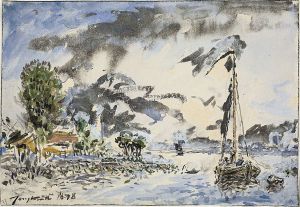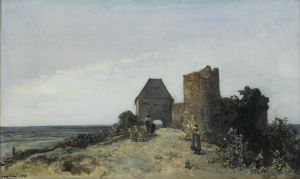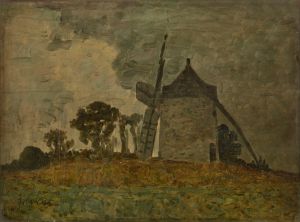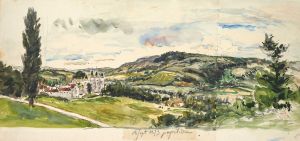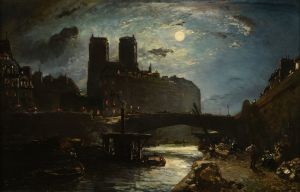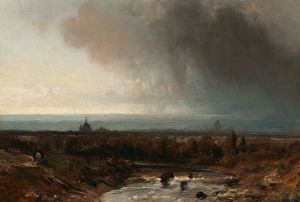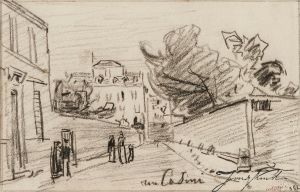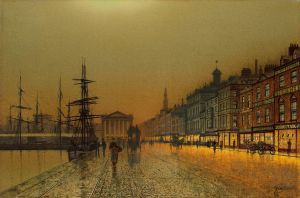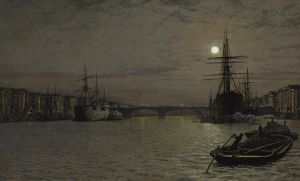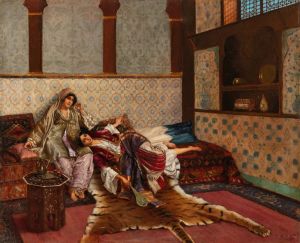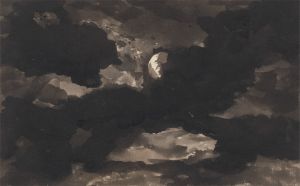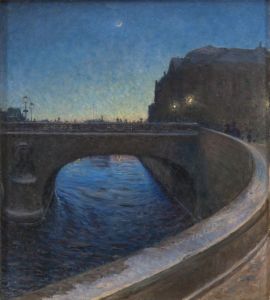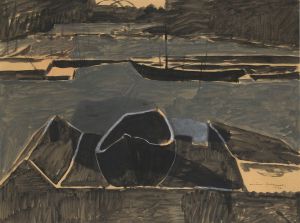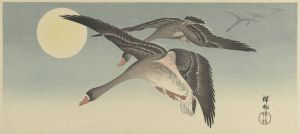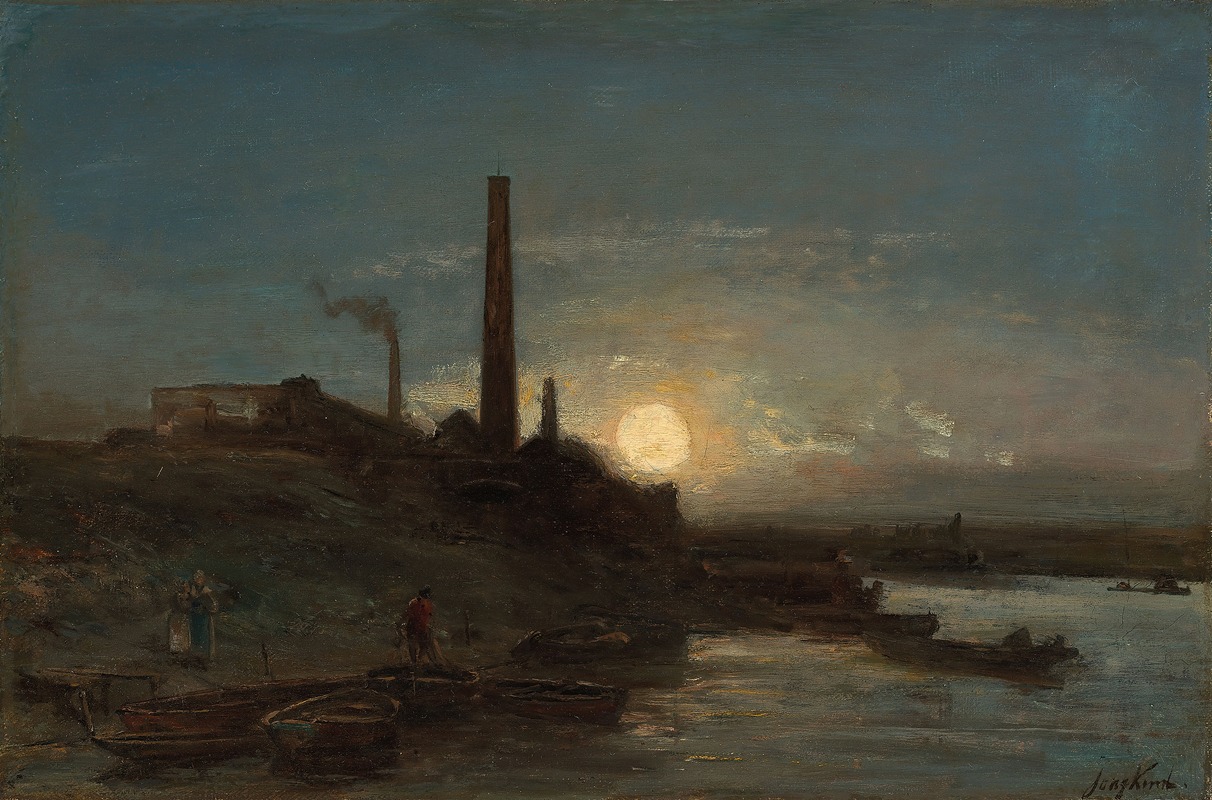
Effet de lune
A hand-painted replica of Johan Barthold Jongkind’s masterpiece Effet de lune, meticulously crafted by professional artists to capture the true essence of the original. Each piece is created with museum-quality canvas and rare mineral pigments, carefully painted by experienced artists with delicate brushstrokes and rich, layered colors to perfectly recreate the texture of the original artwork. Unlike machine-printed reproductions, this hand-painted version brings the painting to life, infused with the artist’s emotions and skill in every stroke. Whether for personal collection or home decoration, it instantly elevates the artistic atmosphere of any space.
Johan Barthold Jongkind was a Dutch painter known for his significant contributions to the development of Impressionism. Born on June 3, 1819, in Lattrop, Netherlands, Jongkind spent much of his career in France, where he became associated with the Barbizon School and later influenced the Impressionist movement. His works are celebrated for their innovative use of light and atmosphere, often depicting landscapes and urban scenes.
"Effet de lune" (Moonlight Effect) is one of Jongkind's notable works, showcasing his mastery in capturing the subtle nuances of light and shadow. This painting exemplifies his ability to convey the tranquil and ethereal qualities of a moonlit scene. Jongkind's technique often involved the use of loose brushwork and a delicate palette, which allowed him to create a sense of immediacy and intimacy in his landscapes.
The painting likely depicts a serene landscape under the soft glow of moonlight, a subject Jongkind frequently explored. His fascination with the effects of light on water and landscapes is evident in this work, as he skillfully renders the reflections and contrasts created by the moon's illumination. Jongkind's approach to painting was characterized by his plein air practice, where he painted outdoors to capture the natural light and atmosphere directly.
Jongkind's influence on the Impressionists, particularly Claude Monet, is well-documented. Monet himself acknowledged Jongkind's impact on his development as an artist, particularly in terms of understanding the interplay of light and color. Jongkind's ability to capture fleeting moments and his emphasis on atmospheric effects were key elements that the Impressionists would later adopt and expand upon.
"Effet de lune" reflects Jongkind's transition from the more traditional landscape painting of the Barbizon School to a style that emphasized the transient effects of light and weather. This transition marked a significant shift in the art world, paving the way for the Impressionist movement that would emerge in the latter half of the 19th century.
Jongkind's works, including "Effet de lune," are housed in various museums and private collections worldwide. His paintings continue to be studied and admired for their pioneering approach to capturing the natural world. Jongkind passed away on February 9, 1891, in La Côte-Saint-André, France, leaving behind a legacy that would influence generations of artists.
In summary, "Effet de lune" by Johan Barthold Jongkind is a testament to the artist's innovative approach to landscape painting and his profound influence on the Impressionist movement. Through his exploration of light and atmosphere, Jongkind captured the beauty and tranquility of moonlit scenes, leaving an indelible mark on the history of art.





